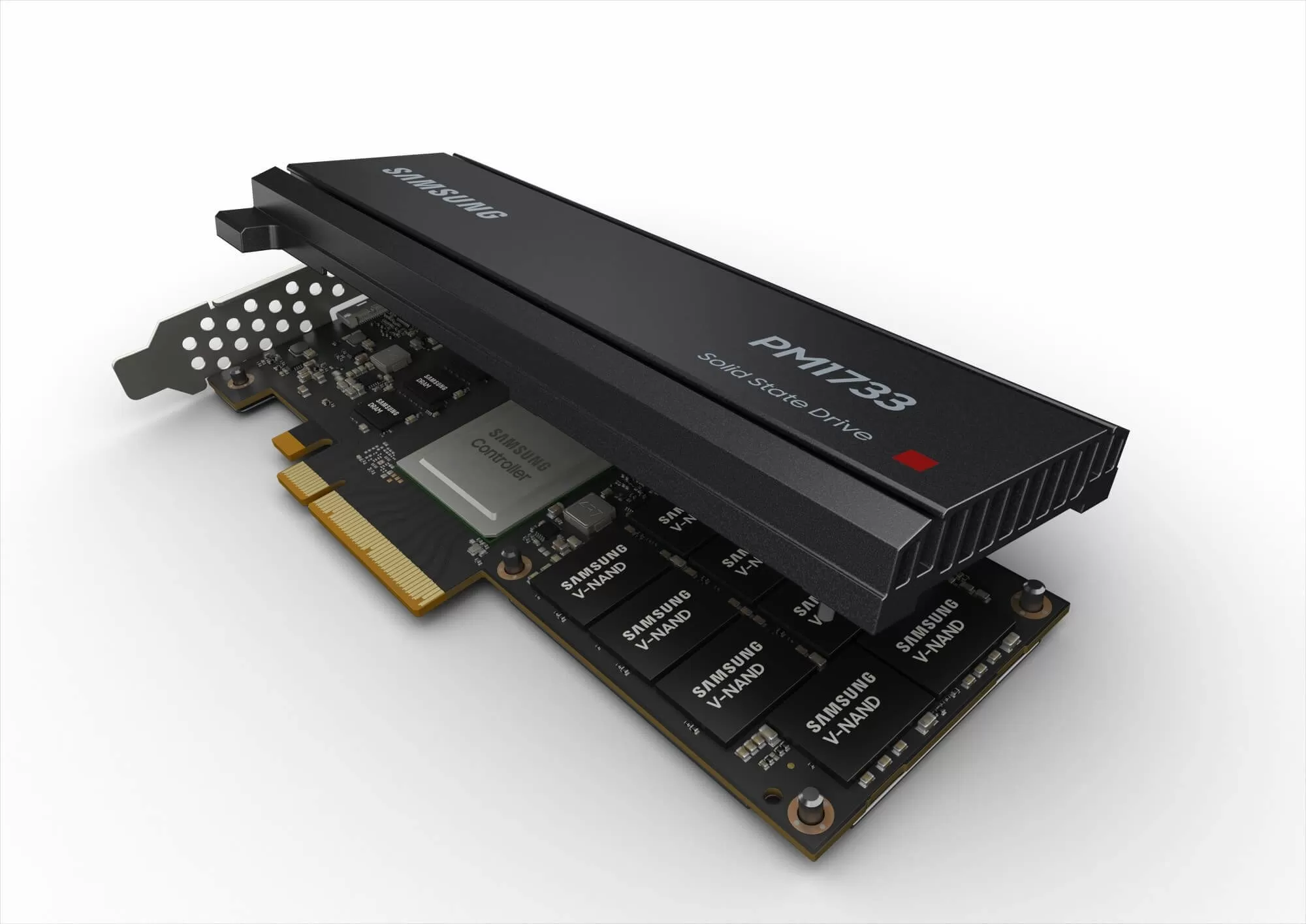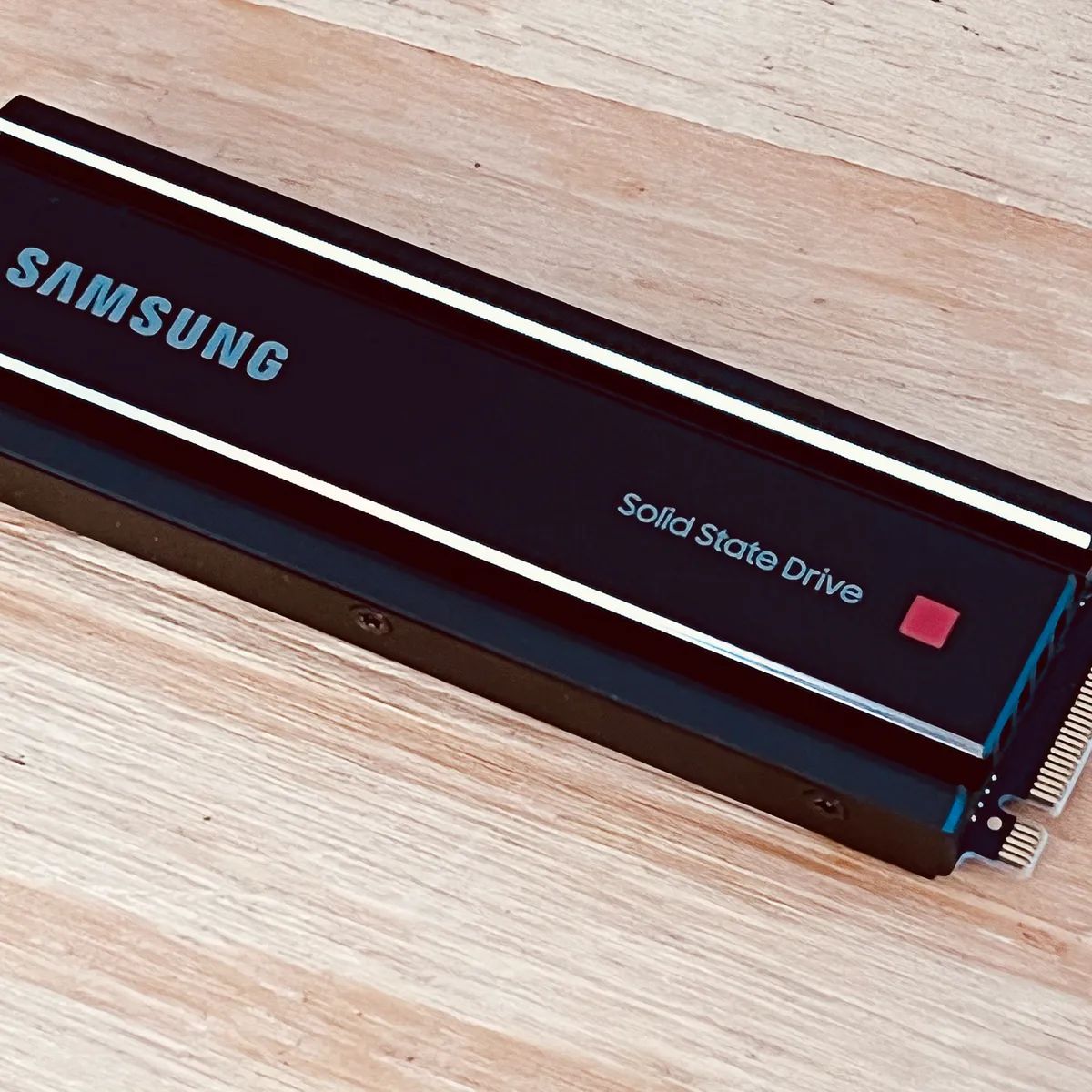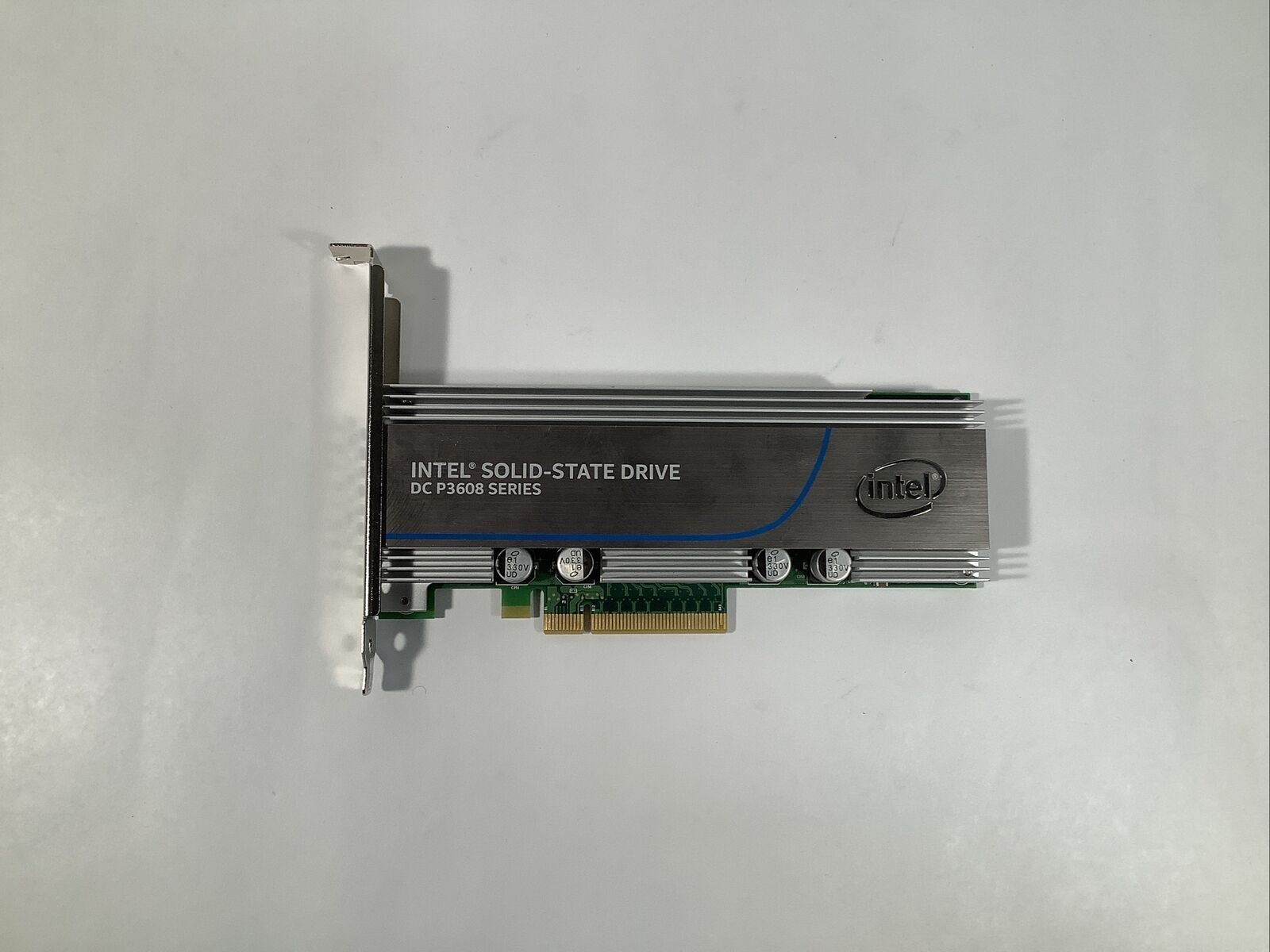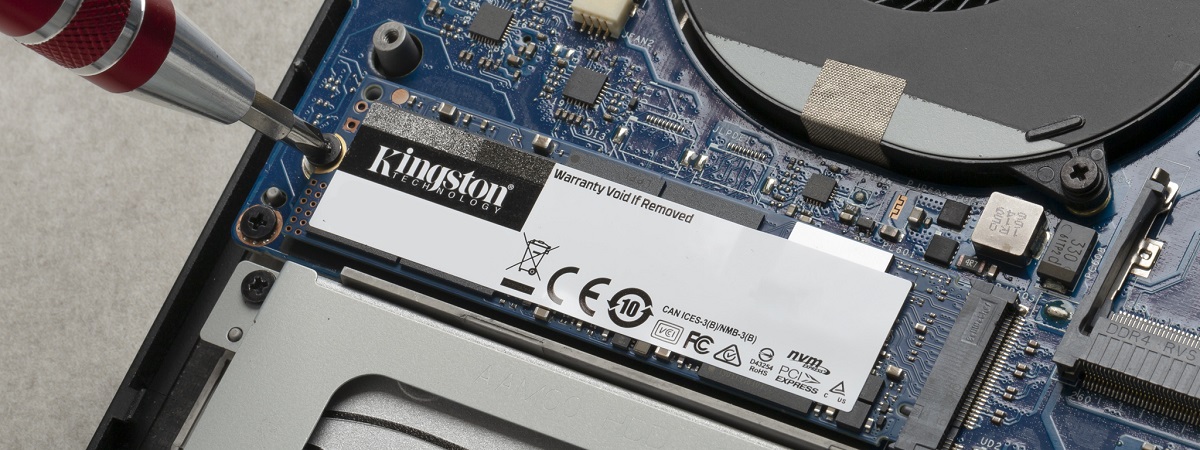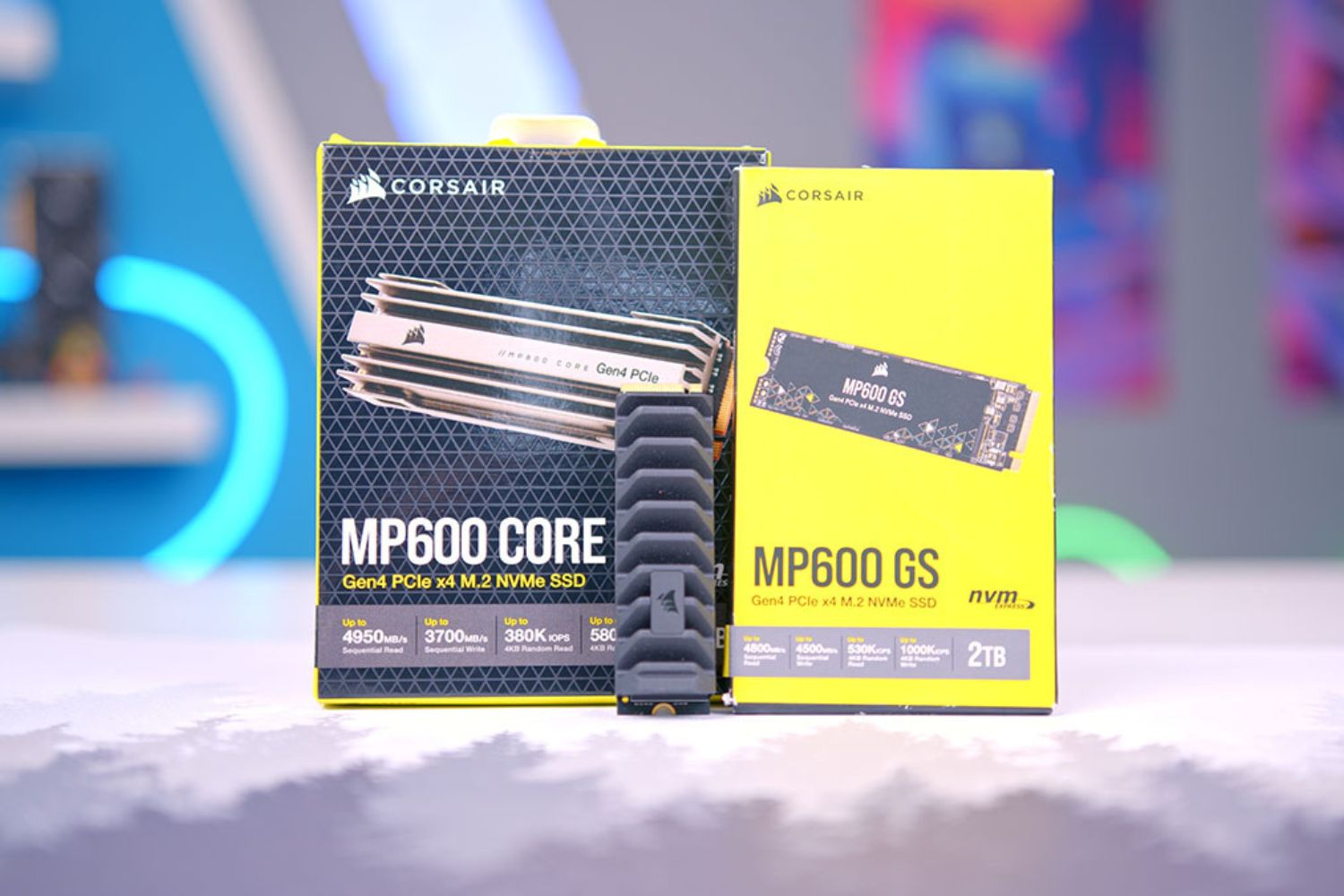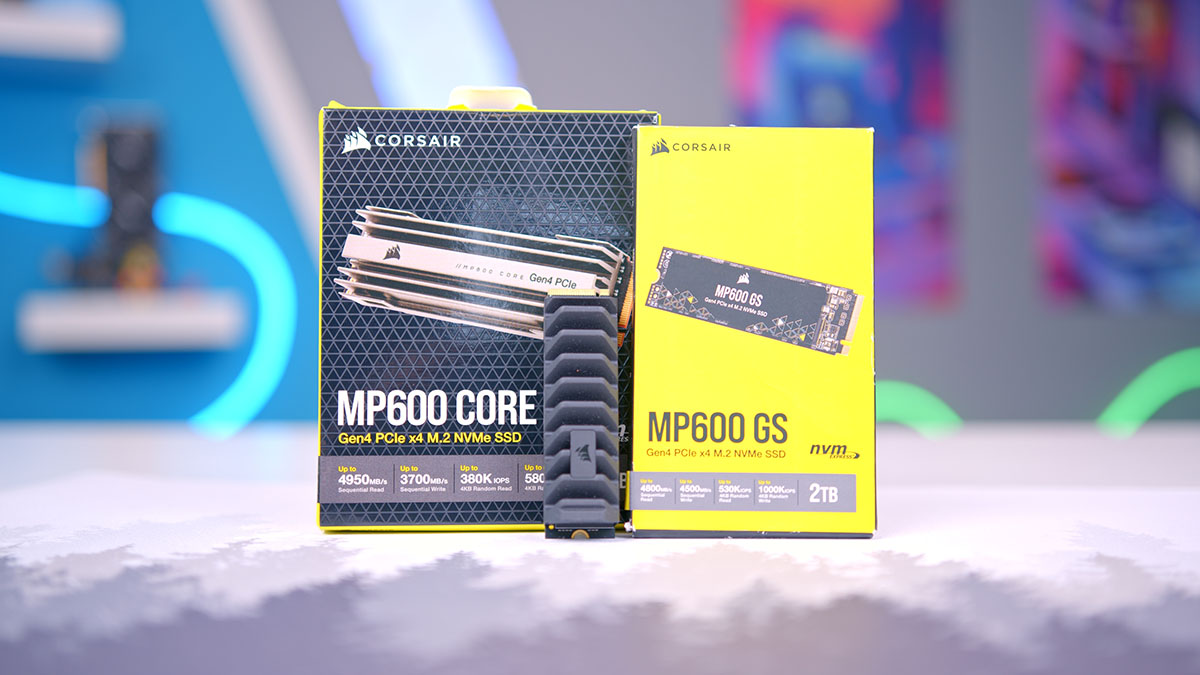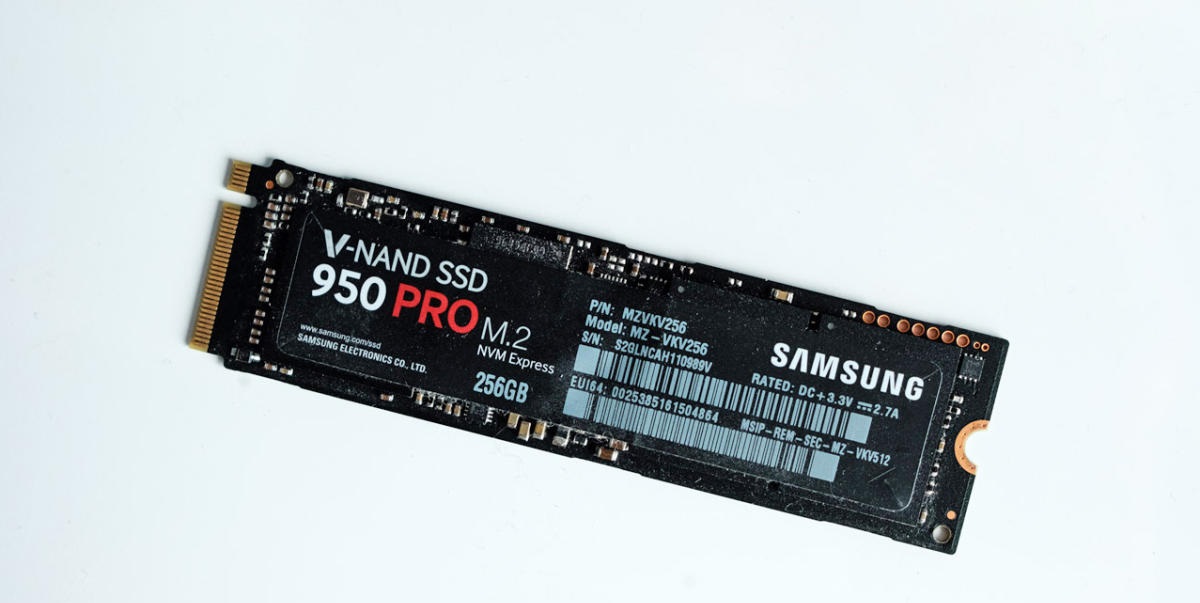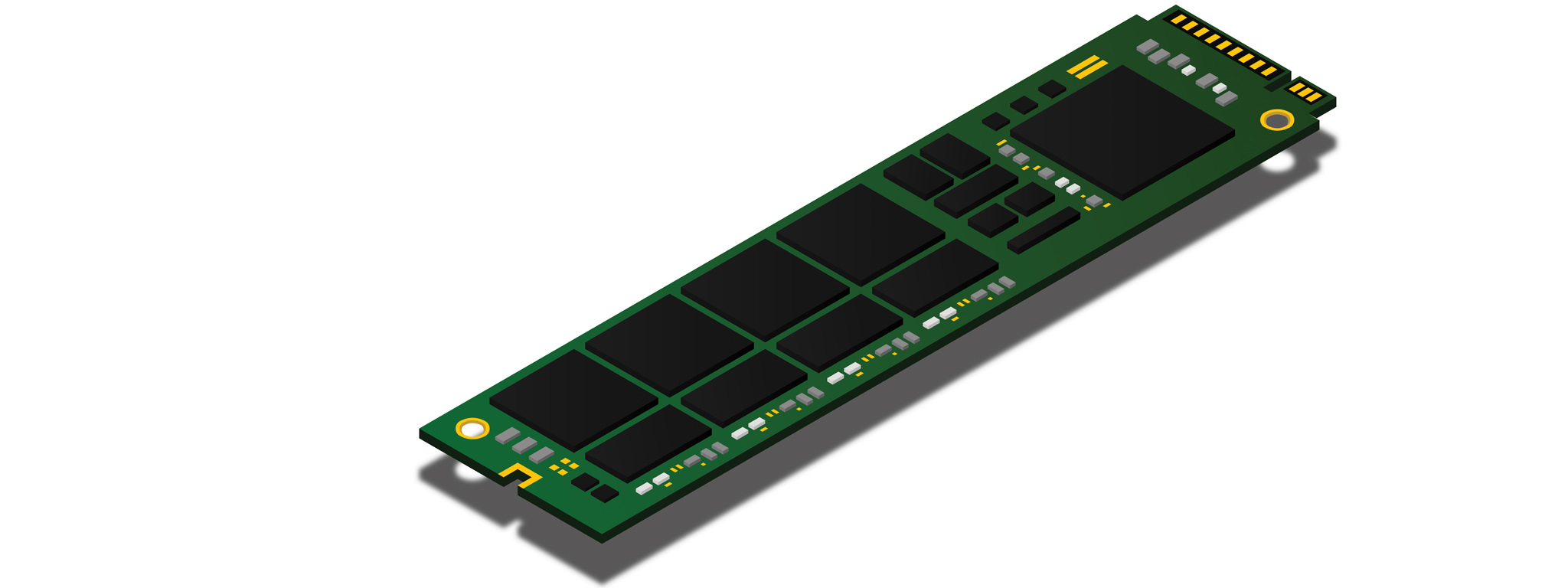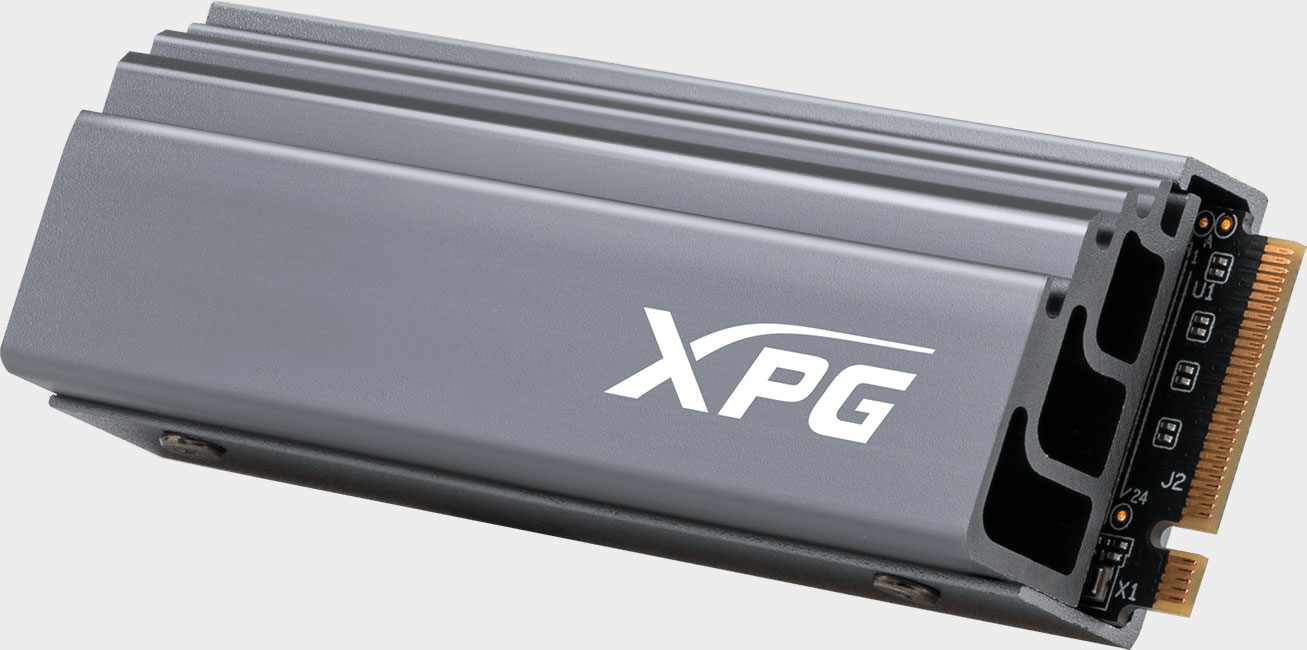Introduction
Welcome to the world of PCIE SSDs – where storage speed and performance reach new heights! In the fast-paced digital era we live in, traditional hard drives often struggle to keep up with our ever-increasing demands for faster data access. This is where PCIE SSDs come in and revolutionize the way we think about storage.
A PCIE SSD, or Peripheral Component Interconnect Express Solid State Drive, is a cutting-edge storage device that utilizes the PCI Express interface to deliver lightning-fast transfer speeds and incredible performance. Unlike traditional hard drives that rely on spinning disks or platters, PCIE SSDs leverage NAND flash memory to store data, resulting in significantly faster access times and increased reliability.
Wondering how PCIE SSDs work their magic? In simple terms, the PCIE interface acts as a high-speed data pathway between the SSD and the computer’s motherboard. This allows for faster data transfer rates, reduced latency, and improved overall system responsiveness. As a result, tasks such as booting up your computer, opening applications, and transferring large files are completed in the blink of an eye.
One of the significant advantages of PCIE SSDs is their unparalleled speed. With read and write speeds that can outperform traditional hard drives and even SATA-based SSDs, PCIE SSDs are a game-changer for those who require lightning-fast access to their data. Whether you’re a gamer looking to reduce load times or a creative professional working with resource-demanding applications, a PCIE SSD can significantly enhance your workflow and overall computing experience.
But like any technology, PCIE SSDs also come with some disadvantages. One of the main drawbacks is the higher cost compared to traditional hard drives and SATA-based SSDs. PCIE SSDs tend to be more expensive due to their advanced technology and higher performance capabilities. Additionally, PCIE SSDs may require specific hardware requirements and may not be compatible with older systems, so it’s crucial to ensure compatibility before making a purchase.
In the next sections, we’ll delve deeper into the mechanics of PCIE SSDs, explore the various types available, discuss the differences between PCIE SSDs and SATA SSDs, and offer guidance on selecting the right PCIE SSD for your needs. If you’re ready to unlock the true potential of your computer’s storage system, let’s dive into the world of PCIE SSDs!
What is a PCIE SSD?
A PCIE SSD, or Peripheral Component Interconnect Express Solid State Drive, is a type of solid-state drive that utilizes the PCI Express interface to connect to a computer’s motherboard. Unlike traditional hard drives or SATA-based SSDs, which connect using SATA ports, PCIE SSDs use the faster and more advanced PCI Express interface to achieve incredibly high speeds and performance.
PCIE SSDs are designed to dramatically improve storage performance, making them ideal for users who require fast data access and transfer rates. By utilizing NAND flash memory technology, PCIE SSDs can read and write data at much higher speeds than traditional hard drives, resulting in significantly faster boot times, application launches, and file transfers.
Featuring a compact form factor, PCIE SSDs come in different physical sizes to suit various computer systems. They can be found in the M.2 and add-in card (AIC) form factors. The M.2 PCIE SSDs are small, slim modules that are directly installed onto the motherboard, usually in slots specifically designed for M.2 SSDs. On the other hand, the AIC PCIE SSDs are larger cards that are installed into PCI Express slots on the motherboard.
PCIE SSDs are capable of delivering outstanding data transfer rates, with read speeds surpassing 3,000 megabytes per second (MB/s) and write speeds exceeding 2,000 MB/s in some high-end models. This exceptional performance enables PCIE SSDs to handle resource-intensive tasks with ease, such as gaming, content creation, video editing, and professional applications like CAD and 3D rendering.
It’s worth noting that PCIE SSDs come in different capacities, ranging from smaller sizes like 256GB up to larger options like 2TB or even higher. The capacity you choose depends on your specific needs and budget. If you work with large files or utilize resource-demanding applications, opting for a higher capacity PCIE SSD can ensure sufficient storage space for your data.
Overall, PCIE SSDs are a revolutionary storage solution that brings blazing-fast speed and superior performance to your computer. Whether you’re a gamer, a content creator, or a professional user, a PCIE SSD can significantly enhance your computing experience by reducing load times, increasing productivity, and providing seamless interaction with your data.
How does a PCIE SSD work?
A PCIE SSD works by utilizing the PCI Express interface, a high-speed data pathway, to connect to a computer’s motherboard and transfer data at incredible speeds. Unlike traditional hard drives that rely on spinning disks or SATA-based SSDs that use the SATA ports, PCIE SSDs leverage NAND flash memory and the PCI Express interface to deliver blistering-fast performance and improved storage capabilities.
At the heart of a PCIE SSD is the NAND flash memory, which is a type of non-volatile storage technology. This memory allows data to be stored and retrieved even when the power is turned off. Inside the PCIE SSD, the NAND flash memory is organized into memory cells that can hold electrical charges, representing 0s and 1s in binary code.
When data needs to be read from or written to the PCIE SSD, the controller chip within the SSD takes charge. The SSD’s controller acts as the traffic manager, directing data flow between the NAND flash memory and the computer’s motherboard. It converts electrical signals into digital data and vice versa.
When you access data stored on a PCIE SSD, the controller selects the appropriate memory cells and retrieves the stored information. The PCIE interface allows for high-speed data transfer between the SSD and the computer’s motherboard, resulting in incredibly fast read and write speeds.
One of the key features of PCIE SSDs is their parallel architecture. PCIE SSDs contain multiple NAND flash memory chips, each connected to the controller via separate data paths. This design allows for tasks to be divided and executed simultaneously, greatly improving overall performance and reducing latency.
PCIE SSDs also make use of advanced error-correction techniques to ensure data integrity and reliability. These techniques, such as parity checking and error-correcting code (ECC), detect and correct errors that may occur during data transmission or storage.
In terms of compatibility, PCIE SSDs require a motherboard that supports the PCI Express interface. Many modern motherboards are equipped with PCIE slots for easy installation of PCIE SSDs. It is important to note that PCIE SSDs may require specific software drivers or firmware updates to be installed on the computer to ensure proper detection and performance.
Overall, the combination of NAND flash memory, the high-speed PCIE interface, and advanced controller technology allows PCIE SSDs to deliver unparalleled speed and performance. These innovative storage devices are revolutionizing the way we store and access data, providing faster boot times, quicker application launches, and seamless multitasking.
Advantages of PCIE SSDs
PCIE SSDs offer several advantages over traditional hard drives and even SATA-based SSDs. These advantages make PCIE SSDs a preferred choice for users who demand lightning-fast speed and superior performance in their storage solutions. Let’s explore some of the key advantages of PCIE SSDs:
1. Blazing-fast Speed: PCIE SSDs are designed to deliver exceptional read and write speeds, far surpassing those of traditional hard drives and SATA-based SSDs. With PCIE SSDs, you can experience near-instant boot times, significantly reduced application loading times, and faster data transfers. This speed boost translates into improved overall system responsiveness and a smoother computing experience.
2. Enhanced Performance: The high-speed data pathway provided by the PCI Express interface enables PCIE SSDs to handle resource-intensive tasks with ease. Whether you’re gaming, editing videos, or working with complex software applications, PCIE SSDs can handle the demands of your workflow without any lag or slowdowns.
3. Reduced Latency: PCIE SSDs have lower latency compared to traditional hard drives. The fast access times offered by PCIE SSDs mean that your computer can quickly retrieve and process data, resulting in improved system performance and faster response times.
4. Improved Energy Efficiency: PCIE SSDs are more power-efficient compared to traditional hard drives. Since they have no moving parts, PCIE SSDs require less power to operate, resulting in improved energy efficiency and longer battery life in laptops or other portable devices.
5. Compact Form Factor: PCIE SSDs come in a variety of physical sizes, including the compact M.2 form factor. This smaller size allows for easier installation and makes PCIE SSDs an excellent choice for systems where space is limited.
6. Reliable and Durable: PCIE SSDs benefit from the inherent reliability and durability of solid-state technology. Since there are no moving parts, PCIE SSDs are less susceptible to mechanical failures that commonly occur with traditional hard drives. They are also more resistant to shock and vibration, making them ideal for use in portable devices or environments that require robust storage solutions.
7. Scalability: PCIE SSDs offer various capacities to suit different storage needs. From smaller capacities like 256GB for everyday use to larger options like 2TB or higher for professional applications, PCIE SSDs provide the flexibility to choose the storage size that best fits your requirements.
Overall, the advantages of PCIE SSDs, including their exceptional speed, improved performance, reduced latency, energy efficiency, compact form factor, reliability, and scalability, make them an excellent choice for users who demand high-performance storage solutions for their computing needs.
Disadvantages of PCIE SSDs
While PCIE SSDs offer numerous benefits, it’s important to consider their disadvantages as well. Understanding the drawbacks of PCIE SSDs can help you make an informed decision when choosing the right storage solution for your needs. Let’s explore some of the key disadvantages of PCIE SSDs:
1. Higher Cost: PCIE SSDs tend to be more expensive compared to traditional hard drives and even SATA-based SSDs. The advanced technology and higher performance capabilities of PCIE SSDs contribute to their higher price. If budget is a constraint, opting for a PCIE SSD may require a larger investment.
2. Compatibility Limitations: PCIE SSDs may have compatibility limitations with older computer systems. Some older motherboards may lack the necessary PCI Express slots or may not support the specific requirements of PCIE SSDs. It’s crucial to check the compatibility of your system before investing in a PCIE SSD.
3. Specific Hardware Requirements: PCIE SSDs often require specific hardware requirements that must be met for optimal performance. This may include a particular type of motherboard, a specific slot for the PCIE SSD, or even firmware updates. Not meeting these requirements may result in degraded performance or incompatibility.
4. Limited Storage Capacity Options: PCIE SSDs may have limited storage capacity options compared to traditional hard drives. While larger capacity PCIE SSDs are available, they can be more expensive and may not offer the same range of capacities as traditional hard drives, which can span multiple terabytes.
5. Less Common in Entry-Level Systems: PCIE SSDs are more commonly found in high-end or enthusiast-level systems. Entry-level systems or budget-friendly devices may not come equipped with PCIE SSDs as standard. Therefore, if you’re purchasing a pre-built system, it may not include a PCIE SSD, or you may need to upgrade to one at an additional cost.
6. Potential Overkill for Basic Computing Needs: For users with basic computing needs such as web browsing, word processing, or light tasks, the speed and performance offered by a PCIE SSD may be overkill. A traditional hard drive or a SATA-based SSD may provide sufficient performance at a lower cost for these usage scenarios.
7. Limited Lifespan: Like all flash-based storage, PCIE SSDs have a limited number of write cycles before they may start to degrade. While PCIE SSDs are designed to withstand a substantial amount of writing, heavy users who frequently write data to the drive may experience a shorter lifespan compared to traditional hard drives.
Considering these disadvantages, it’s important to carefully evaluate your needs, budget, and compatibility requirements when considering a PCIE SSD. While PCIE SSDs offer incredible speed and performance, they may not be the ideal choice for every user or system.
PCIE SSD vs. SATA SSD
When it comes to choosing a solid-state drive (SSD), two common options are PCIE SSDs and SATA SSDs. While both provide faster performance compared to traditional hard drives, they have distinct differences that can impact their suitability for different use cases. Let’s compare PCIE SSDs and SATA SSDs to help you understand their features and make an informed decision:
Data Transfer Speed: PCIE SSDs have a significant advantage in terms of data transfer speed. They utilize the high-speed PCI Express interface, offering blazing-fast read and write speeds. In contrast, SATA SSDs use the SATA interface, which limits their maximum transfer speed. If you require maximum speed and performance, a PCIE SSD is the superior choice.
Interface: PCIE SSDs connect directly to the PCI Express slots on a computer’s motherboard, providing a dedicated pathway for data transfer. SATA SSDs, on the other hand, use the SATA interface and connect to the motherboard through SATA ports. The direct connection of PCIE SSDs allows for faster data transfer and reduced latency compared to SATA SSDs.
Compatibility: SATA SSDs have a significant advantage in terms of compatibility. They are compatible with both older and newer systems, as most motherboards come with SATA ports. PCIE SSDs, however, may require specific hardware requirements and may not be compatible with all systems. It’s important to check your computer’s compatibility before purchasing a PCIE SSD.
Form Factor: SATA SSDs and PCIE SSDs come in different form factors. SATA SSDs are typically based on the 2.5-inch form factor, resembling traditional hard drives. PCIE SSDs, on the other hand, can be found in various form factors, including the compact M.2 form factor or larger add-in card (AIC) form factor. The form factor you choose depends on your system’s compatibility and available slots.
Capacity: In terms of storage capacity, both PCIE SSDs and SATA SSDs offer a wide range of options. You can find both types of SSDs in capacities ranging from smaller sizes like 256GB to larger sizes like 2TB or higher. The capacity you choose should consider your storage needs and budget.
Price: SATA SSDs are generally more affordable than PCIE SSDs. PCIE SSDs tend to be priced higher due to their advanced technology and faster performance. If budget is a concern, a SATA SSD may be a more cost-effective option that still provides excellent performance compared to traditional hard drives.
Use Cases: PCIE SSDs are well-suited for users who require maximum speed and performance, such as gamers, content creators, and professionals working with resource-intensive applications. SATA SSDs, while not as fast as PCIE SSDs, still provide a significant performance improvement over traditional hard drives. They are suitable for general users who want faster boot times, quicker application launches, and smoother multitasking.
In summary, PCIE SSDs offer superior speed, reduced latency, and outstanding performance compared to SATA SSDs. They are an excellent choice for users who demand the highest levels of performance in their storage solution. SATA SSDs, on the other hand, provide a more cost-effective option for users who still want a significant performance boost over traditional hard drives. Ultimately, the choice between PCIE SSDs and SATA SSDs depends on your specific needs, compatibility requirements, and budget.
Types of PCIE SSDs
PCIE SSDs come in different types and form factors to suit various computer systems and storage needs. Let’s explore the different types of PCIE SSDs available in the market:
1. M.2 PCIE SSDs: M.2 PCIE SSDs are small, slim modules that connect directly to the motherboard using an M.2 slot. These SSDs are compact and do not require any cables for connectivity. They come in different lengths and widths, denoted by the M.2 form factor specification. M.2 PCIE SSDs offer high-speed performance and are commonly found in laptops and small form factor desktops.
2. Add-In Card (AIC) PCIE SSDs: AIC PCIE SSDs are larger cards that connect to the computer’s motherboard via the PCI Express slots. These SSDs offer higher storage capacity and performance compared to M.2 PCIE SSDs. AIC PCIE SSDs often come with heatsinks or cooling solutions to manage the heat generated by the high-speed NAND flash memory chips.
3. U.2 PCIE SSDs: U.2 PCIE SSDs, also known as SFF-8639, are 2.5-inch SSDs that utilize a U.2 connector interface. These SSDs offer a combination of high performance and high capacity, making them suitable for enterprise-level applications that demand both speed and storage space. U.2 PCIE SSDs are commonly found in servers and data centers.
4. Half-Height, Half-Length (HHHL) PCIE SSDs: HHHL PCIE SSDs are larger expansion cards that occupy a single or multiple PCI Express slots. These SSDs are typically used in high-performance systems that require large storage capacities and maximum speed. HHHL PCIE SSDs often feature advanced cooling solutions and can provide extreme performance for tasks like media production, 3D modeling, and science simulations.
5. RAID PCIE SSDs: RAID PCIE SSDs are PCIE SSDs configured in a RAID (Redundant Array of Independent Disks) array. RAID arrays combine multiple SSDs into a single logical unit to improve performance, reliability, or both. RAID PCIE SSDs can offer higher read and write speeds and can be beneficial for applications that require high I/O performance, such as servers and data-intensive tasks.
It’s important to note that the availability of different PCIE SSD types may vary depending on the manufacturer and market. When selecting a PCIE SSD, consider your system’s compatibility with the specific form factor and the performance and storage requirements of your intended usage.
With the variety of PCIE SSD types available, you can choose the one that best suits your needs and system configuration. Consider factors such as form factor, capacity, performance, and compatibility to ensure you get the right PCIE SSD for your specific requirements.
Choosing the right PCIE SSD for your needs
When selecting a PCIE SSD, several factors should be considered to ensure it meets your specific needs and requirements. Here are some key points to consider when choosing the right PCIE SSD:
1. Storage Capacity: Determine the storage capacity you require based on your data storage needs. Consider the types of files you will be working with and the amount of space they occupy. PCIE SSDs come in various capacities, ranging from smaller sizes like 256GB to larger options like 2TB or higher. Choose a capacity that provides sufficient space for your data and allows for future growth.
2. Performance Requirements: Consider the performance you need from your PCIE SSD. If you require maximum speed and performance, opt for a PCIE SSD with high read and write speeds. Look for SSDs with high IOPS (Input/Output Operations Per Second) and low latency for faster data access and responsiveness.
3. Form Factor and Compatibility: Determine the form factor that is compatible with your computer system. Consider whether your system supports M.2, U.2, or AIC form factors. Check your motherboard’s specifications to ensure compatibility. Additionally, verify the interface version (PCIe 3.0, PCIe 4.0) supported by your motherboard to maximize the performance of your PCIE SSD.
4. Budget: Set a budget for your PCIE SSD purchase. Determine the maximum amount you are willing to spend and find PCIE SSD options within your budget. Consider the price-to-performance ratio and evaluate different SSD models to choose the best value for your money.
5. Reliability and Warranty: Look for PCIE SSDs from reputable manufacturers with a track record of reliability. Check for warranty coverage and ensure it provides sufficient protection for your investment. Longer warranty periods often indicate higher product quality and may provide peace of mind for potential longevity and support.
6. Reviews and Ratings: Research and read reviews and ratings of different PCIE SSD models. User and expert reviews can give you insights into real-world performance, reliability, and customer satisfaction. Look for SSDs with positive feedback and high ratings to make an informed decision.
7. Future Proofing: Consider the longevity and future compatibility of the PCIE SSD you choose. Look for SSDs with the latest technologies and standards to ensure compatibility with future systems and improvements in storage technology.
By considering these factors, you can make a well-informed decision and choose the right PCIE SSD that meets your storage needs, performance expectations, compatibility requirements, and budget constraints. It’s worth taking the time to research and compare different options to ensure you get the best PCIE SSD for your specific needs.
Installing a PCIE SSD
Installing a PCIE SSD is a relatively straightforward process, but it’s essential to follow the correct steps to ensure a successful installation. Here’s a general guide on how to install a PCIE SSD:
1. Prepare the Hardware: Before starting, ensure that you have the necessary hardware. This includes the PCIE SSD, the appropriate cables (if required), and any necessary screws or brackets for securing the SSD. It’s also crucial to have a screwdriver and an antistatic wrist strap to protect the SSD from static electricity.
2. Identify the Appropriate Slot: Determine the appropriate slot for the PCIE SSD. The specific slot will depend on your motherboard and the type of PCIE SSD you have (M.2, U.2, or AIC). Consult your motherboard’s manual to identify the compatible slot for your PCIE SSD.
3. Prepare the System: Power down your computer and unplug the power cord. Open the computer case, and if necessary, remove any obstructions or cables that may block access to the PCIE slot where the SSD will be installed. You may also need to remove any protective covers or plates on the PCIE slot.
4. Install the PCIE SSD: Carefully align the PCIE SSD with the appropriate slot on the motherboard. Insert the PCIE SSD into the slot at a slight angle, ensuring that the connector pins or edge connector fully fit into the slot. Apply gentle and even pressure to the SSD, pressing it down until it is fully seated in the slot.
5. Secure the PCIE SSD: Depending on the type of PCIE SSD and your specific motherboard, you may need to secure the SSD in place using screws, brackets, or retention clips. Follow the manufacturer’s instructions or consult your motherboard’s manual for guidance on securing the PCIE SSD properly.
6. Verify Connections: After securing the PCIE SSD, double-check the connections. Ensure that all cables are properly connected to the PCIE SSD, the power supply, and the motherboard. If your PCIE SSD requires additional power, make sure to connect the necessary power cables from the power supply to the SSD.
7. Close the Computer Case: Once you have verified the connections and confirmed that the PCIE SSD is securely installed, close the computer case. Ensure that all screws are tightened, and any cables are neatly organized to avoid interference with other components.
8. Power On and Initialize the PCIE SSD: Plug in the power cord and turn on your computer. Enter your computer’s BIOS settings and verify that the PCIE SSD is detected. If the PCIE SSD is not recognized, ensure that the SSD is properly installed and that the BIOS is up to date. If necessary, consult your motherboard’s manual for specific instructions on configuring the PCIE SSD in the BIOS.
9. Format and Partition the PCIE SSD: Once the PCIE SSD is recognized in the BIOS, you will need to format and partition the SSD within your operating system. Go to your operating system’s disk management utility and follow the instructions to format the PCIE SSD and allocate partitions.
That’s it! You have successfully installed your PCIE SSD. Enjoy the lightning-fast speed and improved performance that comes with your new storage solution.
Maintenance and Care for PCIE SSDs
While PCIE SSDs are generally low-maintenance compared to traditional hard drives, taking some simple steps to care for your PCIE SSD can help ensure optimal performance and longevity. Here are some maintenance and care tips for PCIE SSDs:
1. Avoid Physical Damage: Handle your PCIE SSD with care to prevent physical damage. Avoid dropping the SSD or subjecting it to excessive force or pressure. Protect the SSD from impact by keeping it securely installed in your computer case.
2. Keep the SSD Cool: Overheating can affect the performance and lifespan of your PCIE SSD. Ensure that the SSD is adequately cooled by maintaining proper airflow inside your computer case. Consider using additional cooling solutions such as fans or heatsinks if necessary.
3. Protect Against Power Surges: Sudden power surges or electrical fluctuations can potentially damage your PCIE SSD. Protect your SSD by using a reliable surge protector or an uninterruptible power supply (UPS) to provide stable power and safeguard against power fluctuations.
4. Regularly Update Firmware: Check for firmware updates for your PCIE SSD from the manufacturer’s website. Firmware updates can provide bug fixes, performance enhancements, and improved compatibility with operating systems. Follow the manufacturer’s instructions to update the firmware on your PCIE SSD.
5. Backup your Data: While PCIE SSDs are generally reliable, it’s always essential to maintain regular backups of your important data. This ensures that you have a copy of your data in case of any unexpected failures or accidents. Consider using external storage solutions or cloud-based backup services to create regular backups of your PCIE SSD.
6. Clean the Connectors: Over time, the connectors on the PCIE SSD may accumulate dust or debris, potentially affecting performance. Use a can of compressed air or a soft, lint-free cloth to gently clean the connectors, ensuring that there is no residue or buildup. Be careful not to apply excessive pressure or use abrasive materials that could scratch the connectors.
7. Avoid Excessive Writes: While PCIE SSDs are designed to withstand extensive writes, reducing unnecessary write operations can help prolong their lifespan. Avoid excessive write operations such as constantly writing large files or performing continuous heavy data transfers unless necessary.
8. Perform Regular Disk Maintenance: Like any storage device, performing regular disk maintenance is beneficial for PCIE SSDs. Use built-in tools or third-party software to perform disk cleanup, defragmentation (if applicable), and check for errors or bad sectors periodically.
9. Keep your System Updated: Ensure that your operating system, device drivers, and firmware are up to date. This helps ensure compatibility, stability, and performance optimizations for your PCIE SSD.
By following these maintenance and care tips, you can help extend the lifespan and performance of your PCIE SSD. The low-maintenance nature of SSDs makes them a convenient storage solution, but a little care can go a long way in maximizing their benefits.
Conclusion
PCIE SSDs have revolutionized the storage industry, offering unparalleled speed, performance, and reliability compared to traditional hard drives. These high-performance storage devices leverage the PCI Express interface and NAND flash memory technology to provide blazing-fast data transfer rates and reduced latency, resulting in lightning-fast boot times, quick application launches, and seamless data access.
Choosing the right PCIE SSD involves considering factors such as storage capacity, performance requirements, compatibility, budget, and future-proofing. There are various types of PCIE SSDs available, including M.2, U.2, AIC, HHHL, and RAID configurations, catering to different form factors and performance needs.
While PCIE SSDs offer many advantages, such as speed, performance, energy efficiency, and durability, they do come with a few disadvantages. PCIE SSDs tend to be more expensive than traditional hard drives and may require specific hardware requirements. It’s important to carefully weigh these pros and cons to determine if a PCIE SSD is the right choice for your specific needs and budget.
Installing and maintaining a PCIE SSD is relatively straightforward. Following the correct steps during installation, ensuring proper cooling, protecting against power surges, and performing regular maintenance can help maximize the lifespan and performance of your PCIE SSD.
In conclusion, PCIE SSDs are an excellent choice for those seeking the ultimate in storage speed and performance. With their fast data transfer rates, reduced latency, compact form factors, and various capacity options, PCIE SSDs are ideal for gamers, content creators, professionals, and any user who values fast and seamless data access. By understanding the benefits, types, installation process, and maintenance requirements of PCIE SSDs, you can make an informed decision and harness the astonishing speed and reliability they offer. Upgrade to a PCIE SSD and unlock the true potential of your storage solution.







